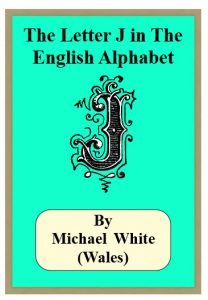THE LETTER J WAS THE NEWEST ADDITION TO THE ENGLISH ALPHABET. The letter “J” is the tenth letter of the alphabet used for the modern English Language. It is also used in a number of other languages, including French, German, and Spanish. The letter “J” evolved from the letter “I,” so the early development of the two letters is the same.
Our J was developed from tenth letter of the Phoenician alphabet, “YOD.” The Phoenicians used the letter to represent the beginning “Y” sound of YOD, which was their word for hand. When the Greeks adapted the Phoenician alphabet around 800 B.C., they used the letter, which they named “iota,” for the sound of the vowel that is much like the consonant “Y.” The Etruscans adopted the Greek alphabet about 700 B.C. and the Romans adopted the Etruscans alphabet in 650 B.C. Both peoples continued to use “I” in this way.
In Europe, in the Middle Ages (A.D. 400’s through the 1400’s) scribes began writing a lengthened form of “I” at the end of a word. They used this form especially for a Roman Numeral, such as VIII (the numeral for eight). After the invention of printing in the late 1400’s, the long- tailed “I,” which began to look like “J” was used at the beginning of a word, while an ordinary “I” was used in the middle. “J” began to be used for the consonant sound in France around about 1620, and the English printers soon followed this practice. The first English language book to make a clear distinction between “I” and “j” was published in 1633. “I” and “J” were not considered to be separate letters until 1801, with the publication of William Perry’s Royal Standard English Dictionary. Perry’s dictionary was the first to alphabetise words separately under “I” and “J.”
